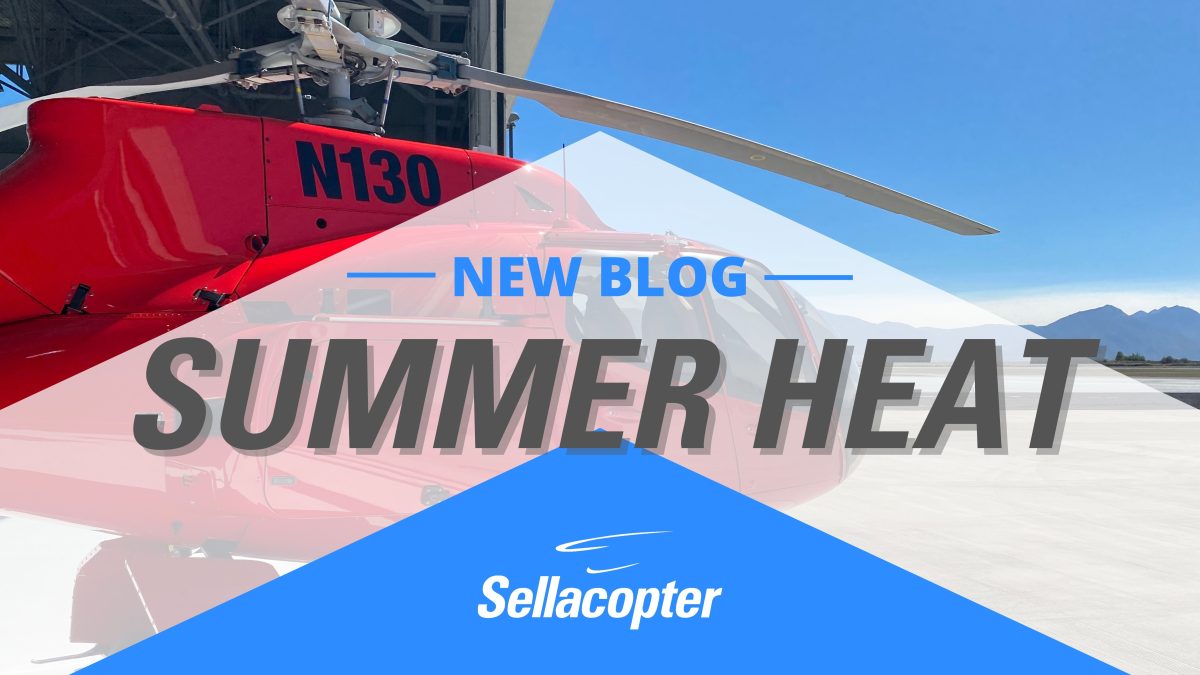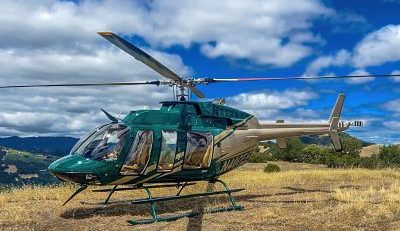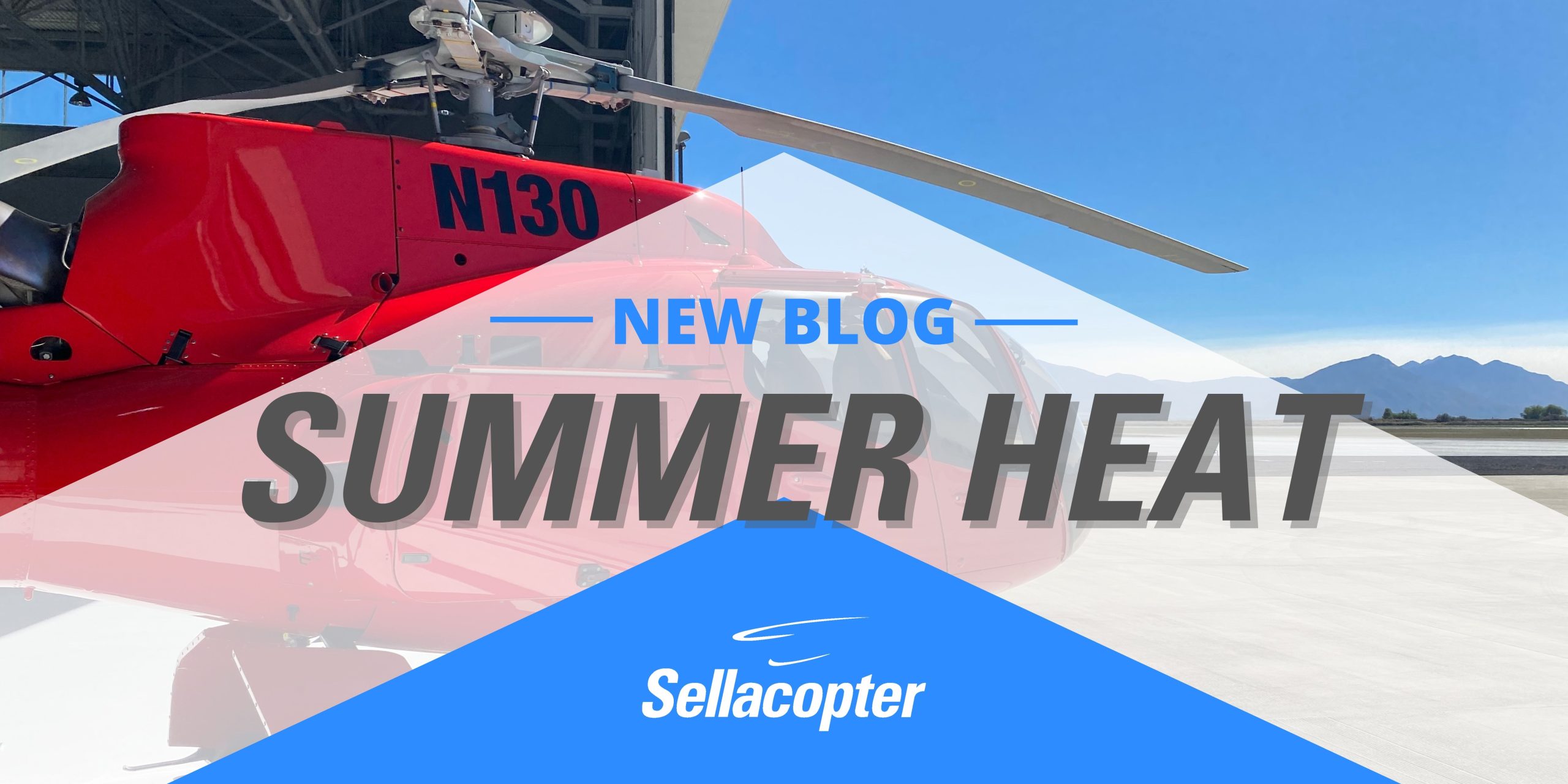- Sellacopter - List it. Sell it. Done.
- 1-855-SELLACOPTER


How Temperature & Humidity Affect Helicopter Performance
Summer Heat and Helicopter Operations: How Temperature and Humidity Affect Performance
The summer heat can take its toll on just about everyone and everything, including helicopters. As summer temperatures continue to rise, it’s important to be aware of how hot temperatures and high humidity can affect helicopter operations – and have a negative impact on helicopter performance. In this blog post, we’ll discuss the effects of summer heat and high humidity on helicopters and what precautions pilots should take while flying in these conditions.
As we know, air density plays a significant role in overall helicopter performance. Unfortunately, as temperature increases, air density decreases. Adding insult to injury, as a parcel of air becomes more saturated (more humid), this further reduces air density! Hot/Humid is the one-two punch affecting helicopter performance.
 If you are familiar with the lift equation, you know that lift is directly related to air density. Therefore, as air density decreases, fewer air molecules travel through the main rotor blades, drastically decreasing the lifting performance of the helicopter. Air density, as it relates to the lifting surface (in our case, rotor blades), affects both piston and turbine helicopters. Making matters worse, piston helicopters rely on air to create compression and subsequent combustion. Consequently, as air density is reduced, the air that a piston engine can intake is reduced, resulting in reduced power output.
If you are familiar with the lift equation, you know that lift is directly related to air density. Therefore, as air density decreases, fewer air molecules travel through the main rotor blades, drastically decreasing the lifting performance of the helicopter. Air density, as it relates to the lifting surface (in our case, rotor blades), affects both piston and turbine helicopters. Making matters worse, piston helicopters rely on air to create compression and subsequent combustion. Consequently, as air density is reduced, the air that a piston engine can intake is reduced, resulting in reduced power output.
Turbine helicopters are better at creating uniform engine performance at all air densities but are not immune from decreased engine performance caused by heat and humidity. I remember when flying in the hot canyon (Grand Canyon Tours), the H130 helicopter I would fly reached its max MGT/TOT at a lower torque setting, limiting the power available to me. So, in layman’s terms, the helicopter engine would reach its temperature limit prior to reaching its actual power limit.
As the temperature and humidity rise, so does the demand on the helicopter. The increased heat can lead to decreased power and performance, as well as increased wear and tear on the aircraft. Here are some things to keep in mind when flying a helicopter in hot and humid conditions:
- Check for any changes in performance data or limitations that may be caused by the increased temperature and humidity. Yes, bust out your RFM to ensure proper preflight performance calculations.
- Be prepared to decrease your payload; you may need to reduce passengers or fuel.
- Slow is fast applies to anytime you are piloting a helicopter – even more important when operating in hot / humid environments.
- If landing off airport – within a confined area – make sure you have the performance to safely land and take back off.
- If you are doing auto-rotation practice, think about setting a limit at which the training maneuver becomes too dangerous. The flight school I went to was 30 degrees Celsius.
- If you have an actual emergency, resulting in autorotation – hot / humid conditions will cause significant sinking during your flare. I suggest adjusting the height of your flare, and potentially needing to (gradually) be more aggressive on your aft cyclic to build rotor rpm, prior to leveling out.
- Your “human performance” will also degrade in hot / humid conditions. Drink plenty of fluids and monitor yourself for signs of heat-related illness, like heat stroke.
- If performance is ever hindering the safety of your mission, call it a day or don’t even take off to begin with. Know your machines limits, and if heat and humidity are not giving you adequate performance margin, THEN DON’T FLY!
Of course, no matter what precautions you take, the summer heat and humidity will affect your helicopter’s performance. Be constantly aware of your helicopter and how the machine is performing. Prior to flight and during flight, run performance calculations and make sure you leave yourself ample margin.
Flying in hot and humid conditions can be demanding, but by following these simple tips and taking proactive measures, pilots can help ensure that their helicopter can perform at its best for a safe and successful flight.
Written by Sellacopter CEO, Halsey Schider
